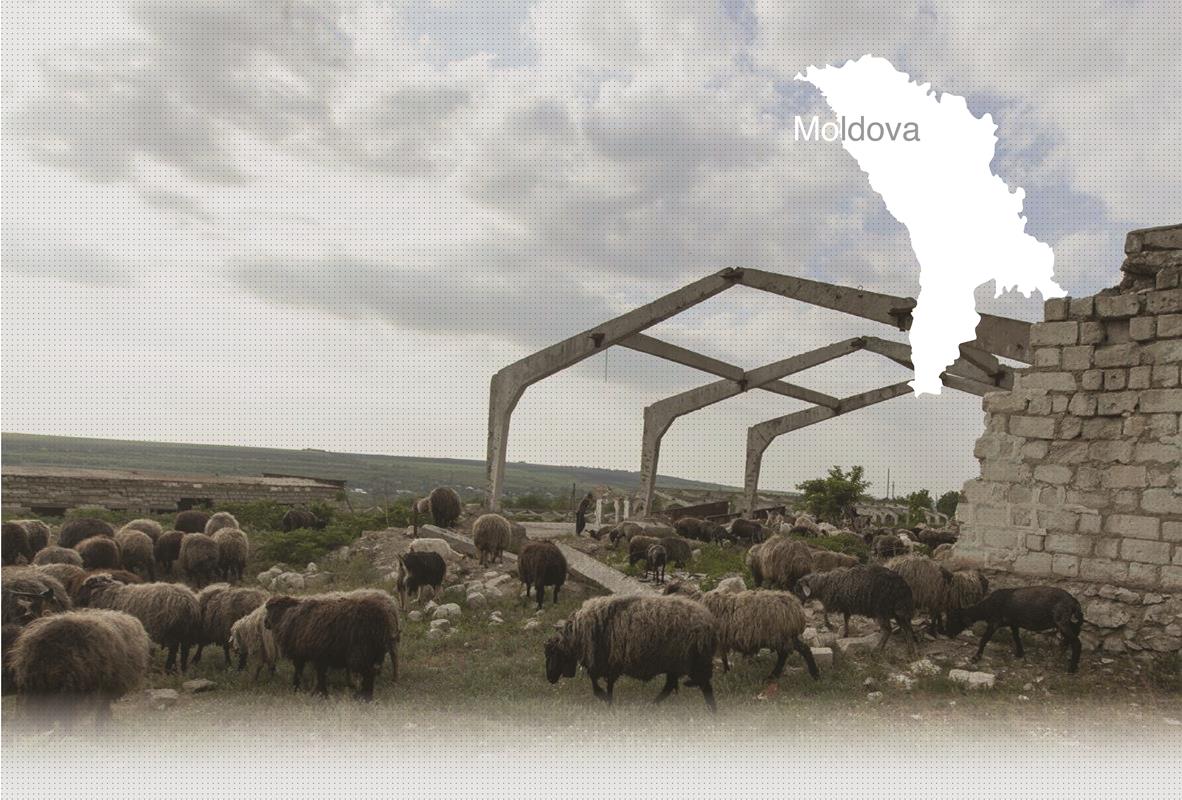

2 Killing site(s)
Grigori V., born in 1930: “One day I saw a column of Jews passing through the village. More than a hundred of them were guarded by Romanians on horses. Some of the Jews were carrying some bundles but those poor people didn’t have anything to eat. Romanian soldiers didn’t let the villagers approach the column. I managed to throw a piece of bread to one Jewish man. He gave me his belt in exchange (…) Everyone in the column was on foot a part from one pregnant woman. She was lying on a kind of a wheelbarrow that was dragged by several men. She was in labor. She was helped by four women. She was screaming but the column didn’t even stop. The column was marching in direction of Soroca. The Jews were executed in a ravine located on the outskirts of Soroca (…)”. (Witness N°184Mo, interviewed in Volovița, on November 22, 2014)
Volovița is a commune in Soroca District, in north eastern Moldova, on the border with Ukraine. It is composed of two villages, Alexandru cel Bun and Volovița. Before the war, the village of Volovița was mainly inhabited by Moldovans. There were only two Jewish families living in Volovița. One of them owned a bar and shop. The Jewish families were went by the names of Buium and Mayer. One of the oldest and largest Jewish communities in Bessarabia resided in Soroca, located 9km north of Volovița. In 1930, 36% of the total population in Soroca was Jewish. The majority of Jews were involved in agricultural activity, growing tobacco, grapes, and other fruits. There was no synagogue or cemetery in Volovița itself, but there were several in Soroca.
After a year of Soviet occupation, the district was reoccupied by the Romanian army in July 1941. By that time, some Jews had already been either deported by the Soviet administration or had left by of their own accord. It is difficult to estimate the exact number of the Jews who left with the Soviets, but according to the Moldavan Archives [RG25.003M, Roll 654, Folder 13] about 6,819 out of 61,000 population of the Soroca district fled. This was the case of one of the Jewish families of Volovita, the Buium family. After the war the father came back and worked in a brewery. Those who stayed behind were displaced to transit camps, where they died from hunger, lived in inhuman conditions or were shot during the mass shooting. Those who didn’t die were sent to Transnistria. Dozens of Jews who couldn’t walk or were too weak were shot on the spot and buried alongside the road. Many of those execution sites remain unknown until today. According to Grigori V., born in 1930, members of another Jewish family, the Mayers, were arrested in their house and taken by Germans shortly after the occupation. They never returned. They were most probably confined in one of the principal transit camps of Vertiujeni, which numbered about 23,000 inmates in August 1941, according to the report of the Chisinau Gendarme Inspectorate. All the Jews from the Soroca district were rounded-up and taken to the three camps: Vertiujeni, Alexandru cel Bun and Rublenita. From time to time, the inmates from the smaller camps were transferred to the bigger camp of Vertujeni. For example, on August 16th 1941, 1,600 Jews from the Alexandru cel Bun camp and 2,000 from the Rublenita were transferred to the one in Vertujeni. The displacement of Jews within the district was confirmed by YIU witnesses and field research in the area. Thus, the witnesses interviewed in Volovita, recall that during the war, two columns of Jews passed through Volovița. They were guarded by Romanian soldiers on horses. Each of two columns contained 100 to 300 people: men, women and children. They were walking on foot, carrying small bundles. The first column came from the direction of Floreşti and went in the direction of Soroca. Jews who were too weak to move forward were either shot dead or left behind, and were later buried by requisitioned local men in a field on the edge of the village. According to Ilie G., born in 1929, the rest of the Jews from this column spent a month in a provisory transit camp established in Alexandru cel Bun near Volovița. Later on, the Jews were shot in a ravine at the outskirts of Soroca. The second column stopped in Volovița for the night. With the help of the local witness, Yahad - In Unum managed not only to discover that an isolated shooting took place in Volovita, but was also able to find out the details of the execution and the location of the execution site, which is without memorial to this day. From the column, about twenty young men were arrested and brought to a stable by the Romanians. While the Jewish men were waiting in the stable, ten premilitaries from the village were requisitioned to go to the forest and dig a pit. They dug the pit under the surveillance of German and Romanian soldiers. The pit was big and deep, square-shaped and about 4m2. At night, once the pit was complete, the 20 Jews were brought and shot inside it. A few decades ago, the bodies of the victims were exhumed.
Do you have additional information regarding a village that you would like to share with Yahad ?
Please contact us at contact@yahadinunum.org
or by calling Yahad – In Unum at +33 (0) 1 53 20 13 17